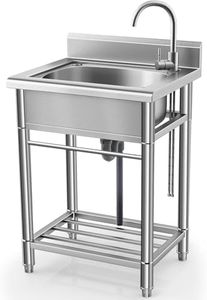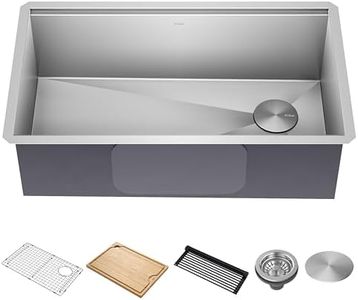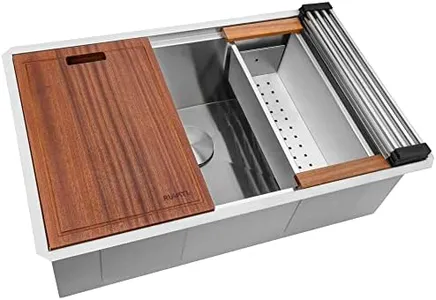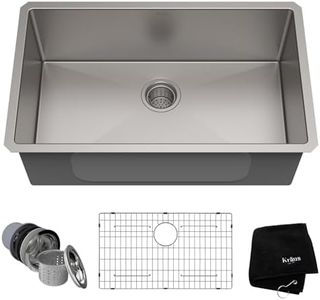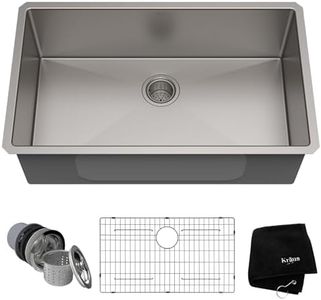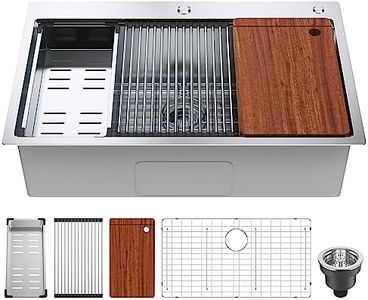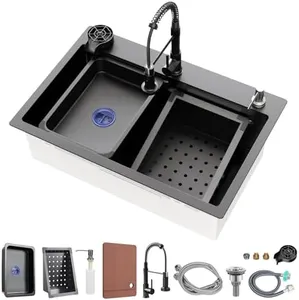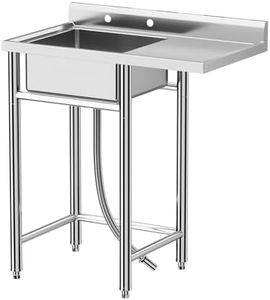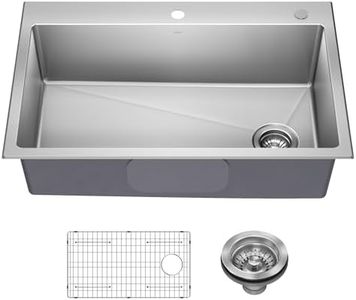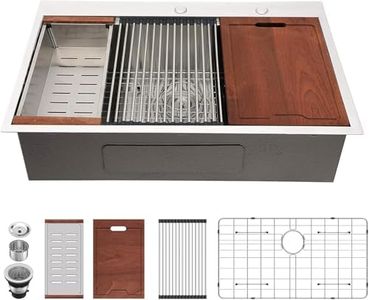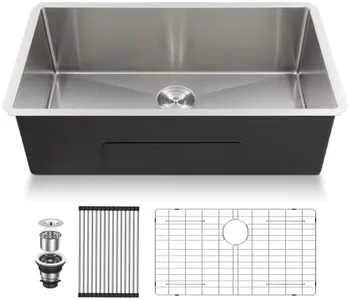We Use CookiesWe use cookies to enhance the security, performance,
functionality and for analytical and promotional activities. By continuing to browse this site you
are agreeing to our privacy policy
10 Best Stainless Steel Kitchen Sinks 2025 in the United States
How do we rank products for you?
Our technology thoroughly searches through the online shopping world, reviewing hundreds of sites. We then process and analyze this information, updating in real-time to bring you the latest top-rated products. This way, you always get the best and most current options available.

Buying Guide for the Best Stainless Steel Kitchen Sinks
Choosing the right stainless steel kitchen sink can significantly impact the functionality and aesthetics of your kitchen. Stainless steel sinks are popular due to their durability, resistance to stains and rust, and their sleek, modern look. When selecting a stainless steel kitchen sink, it's important to consider several key specifications to ensure you get the best fit for your needs and preferences.GaugeThe gauge of a stainless steel sink refers to the thickness of the steel. It is measured in numbers, with lower numbers indicating thicker steel. Thicker steel (lower gauge, such as 16 or 18) is more durable, less prone to denting, and quieter when dishes are placed in the sink. Thinner steel (higher gauge, such as 20 or 22) is more affordable but may be less durable and noisier. If you use your sink heavily or want a quieter experience, opt for a lower gauge. For lighter use or budget considerations, a higher gauge may suffice.
Size and ConfigurationThe size and configuration of the sink are crucial for fitting into your kitchen layout and meeting your usage needs. Sinks come in various sizes, from compact single-bowl models to large double or triple-bowl designs. Consider the size of your kitchen and the amount of counter space available. Single-bowl sinks are great for smaller kitchens or if you often wash large pots and pans. Double-bowl sinks offer versatility for multitasking, such as washing dishes in one bowl and rinsing in the other. Choose a configuration that matches your cooking and cleaning habits.
Mounting StyleStainless steel sinks can be mounted in different ways, including top-mount (drop-in), under-mount, and farmhouse (apron-front) styles. Top-mount sinks are easier to install and are suitable for most countertops. Under-mount sinks provide a seamless look and make countertop cleaning easier, as there is no lip to catch debris. Farmhouse sinks have a distinctive front panel and add a rustic or traditional touch to the kitchen. Your choice of mounting style should align with your kitchen design and installation preferences.
FinishThe finish of a stainless steel sink affects its appearance and ease of maintenance. Common finishes include brushed, satin, and polished. Brushed and satin finishes are more resistant to scratches and water spots, making them easier to maintain and ideal for busy kitchens. Polished finishes have a shiny, reflective surface that can show scratches and fingerprints more easily but offer a sleek, modern look. Consider how much maintenance you are willing to perform and the overall style of your kitchen when choosing a finish.
SoundproofingSoundproofing features in stainless steel sinks help reduce noise from running water and clattering dishes. These features can include sound-deadening pads or undercoating on the underside of the sink. Higher-end sinks often come with better soundproofing. If you are sensitive to noise or have an open-plan kitchen where sound travels easily, look for sinks with good soundproofing. For less concern about noise, basic soundproofing may be sufficient.
Drain PlacementThe placement of the drain in a stainless steel sink can affect its functionality and ease of use. Drains can be located in the center, rear, or corner of the sink. Center drains are common and provide balanced drainage, but they can interfere with under-sink storage. Rear drains offer more usable space under the sink and better drainage efficiency. Corner drains are less common but can be useful in specific kitchen layouts. Consider your under-sink storage needs and how you use your sink when choosing the drain placement.
Most Popular Categories Right Now
